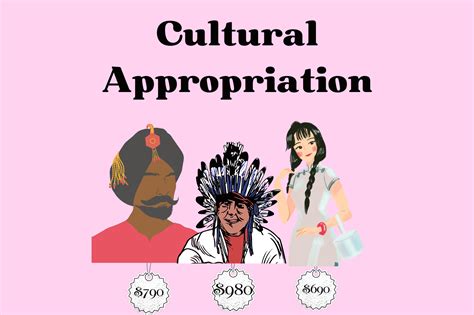
Danny Boyle, director of the Oscar-winning film “Slumdog Millionaire,” now says he wouldn’t direct the movie if offered the project today, citing concerns about cultural appropriation. Boyle expressed these sentiments in a recent interview, acknowledging the potential for misrepresentation and exploitation inherent in a Western filmmaker telling a story rooted in Indian culture. His retrospective view highlights the increasing awareness and sensitivity surrounding cultural representation in the film industry.
Danny Boyle, the acclaimed director behind films such as “Trainspotting” and “28 Days Later,” has publicly stated that he would not undertake the direction of “Slumdog Millionaire” if the opportunity arose in the present day. This change of heart stems from heightened awareness of cultural appropriation and the potential for a Western filmmaker to misrepresent or exploit a story deeply embedded in Indian culture. Boyle’s reflection arrives amidst ongoing debates about diversity, representation, and ethical storytelling in Hollywood.
“I think because of the increasing sensitivity, I wouldn’t have attempted it now,” Boyle stated in an interview, reflecting on the complexities of cultural representation in film. He elaborated on his discomfort with the idea of a Western director profiting from a distinctly Indian narrative, particularly given the power dynamics at play. “I don’t think it’s appropriate. I think now, with the increasing sensitivity, I wouldn’t have attempted it.”
“Slumdog Millionaire,” released in 2008, garnered significant critical acclaim and commercial success, winning eight Academy Awards, including Best Director for Boyle and Best Picture. The film tells the story of Jamal Malik, a young man from the slums of Mumbai who becomes a contestant on the Indian version of “Who Wants to Be a Millionaire?” As Jamal progresses through the game, his life story unfolds through flashbacks, revealing the hardships and resilience that shaped him. The film was lauded for its vibrant visuals, compelling narrative, and uplifting message. However, it also faced criticism from some quarters regarding its portrayal of poverty and its outsider perspective on Indian culture.
The film’s success brought international attention to its cast and crew, many of whom were relatively unknown at the time. Dev Patel, who played Jamal Malik, became a breakout star, launching a successful acting career in Hollywood. Freida Pinto, who played Latika, also gained international recognition. The film’s soundtrack, composed by A.R. Rahman, won two Academy Awards and further popularized Indian music globally. Despite these achievements, the film’s portrayal of India sparked debate about authenticity and cultural representation.
Boyle’s recent comments underscore a growing consciousness within the film industry regarding the ethical considerations of cross-cultural storytelling. The debate revolves around the idea that stories should be told by those who have lived them or who possess a deep understanding of the culture being depicted. This perspective challenges the traditional Hollywood model, where Western filmmakers often dominate the narrative landscape, sometimes at the expense of authentic representation.
Cultural appropriation, as defined in the context of filmmaking, refers to the adoption or use of elements of a minority culture by members of the dominant culture, often without understanding or respecting their original context and meaning. Critics argue that this practice can perpetuate stereotypes, commodify cultural traditions, and marginalize the voices of those from the culture being appropriated.
Boyle’s acknowledgment aligns with a broader movement within the entertainment industry to prioritize diverse voices and promote inclusive storytelling. This movement has led to increased opportunities for filmmakers from underrepresented backgrounds and a greater emphasis on authenticity in casting and representation. Recent films and television shows that have successfully navigated these challenges often involve collaborative efforts between filmmakers from different cultural backgrounds, ensuring that diverse perspectives are incorporated into the creative process.
One of the primary criticisms leveled against “Slumdog Millionaire” at the time of its release was its depiction of poverty in India. Some critics argued that the film perpetuated harmful stereotypes and presented a skewed view of life in the slums of Mumbai. They contended that the film focused too heavily on the sensational aspects of poverty, neglecting the resilience and agency of the people living in those communities.
In response to these criticisms, Boyle defended his intentions, arguing that he sought to portray the hope and humanity amidst hardship. He emphasized that the film was a work of fiction and not intended as a documentary representation of Indian society. However, the debate surrounding the film’s portrayal of poverty highlighted the complexities of representing marginalized communities on screen.
Another point of contention was the film’s outsider perspective. Some critics argued that a Western filmmaker could not authentically capture the nuances and complexities of Indian culture. They suggested that the film lacked the depth and understanding that could only come from someone who had lived and experienced that culture firsthand.
Despite these criticisms, “Slumdog Millionaire” also received praise for its vibrant visuals, compelling narrative, and universal themes. Many viewers were moved by the story of Jamal Malik and his journey from poverty to success. The film’s uplifting message resonated with audiences around the world, contributing to its widespread popularity.
The film’s success also had a significant impact on the careers of its cast and crew. Dev Patel and Freida Pinto became overnight stars, and A.R. Rahman’s soundtrack introduced Indian music to a global audience. The film’s success helped to pave the way for more diverse representation in Hollywood and opened doors for other Indian actors and filmmakers.
Boyle’s recent comments reflect a growing awareness of the importance of cultural sensitivity and ethical storytelling in the film industry. As the industry becomes more diverse and inclusive, it is crucial for filmmakers to consider the potential impact of their work on the communities they are representing. This requires a willingness to listen to diverse voices, engage in meaningful dialogue, and prioritize authenticity in casting and representation.
The concept of cultural appropriation extends beyond the film industry and has implications for various fields, including fashion, music, and art. In each of these areas, it is essential to consider the power dynamics at play and the potential for harm when adopting elements of a minority culture without understanding or respecting their original context.
In fashion, for example, cultural appropriation can manifest in the form of designers using traditional patterns or motifs from other cultures without giving proper credit or understanding their significance. This can lead to the commodification of cultural traditions and the erasure of the voices of the people who created them.
In music, cultural appropriation can involve musicians sampling or borrowing from other cultures without acknowledging the source or obtaining permission. This can result in the exploitation of marginalized artists and the perpetuation of harmful stereotypes.
In art, cultural appropriation can occur when artists use imagery or themes from other cultures without understanding their meaning or significance. This can lead to misrepresentation and the trivialization of cultural traditions.
To avoid cultural appropriation, it is essential to engage in respectful dialogue with members of the culture being represented, seek their input and guidance, and give proper credit to the original creators. It is also crucial to understand the historical and social context of the cultural elements being used and to avoid perpetuating stereotypes or misrepresentations.
Boyle’s comments serve as a reminder that filmmakers have a responsibility to be mindful of the cultural impact of their work and to strive for authentic and respectful representation. As the industry continues to evolve, it is crucial to prioritize diverse voices and promote inclusive storytelling that reflects the richness and complexity of our world.
The debate surrounding “Slumdog Millionaire” and cultural appropriation highlights the ongoing challenges of representing diverse cultures on screen. While the film achieved significant success and brought attention to Indian talent, it also sparked important conversations about authenticity and ethical storytelling. Boyle’s recent comments demonstrate a growing awareness of these issues and a commitment to promoting more inclusive and respectful representation in the film industry.
The evolution of perspectives on “Slumdog Millionaire” also reflects a broader shift in societal attitudes toward cultural sensitivity. What might have been considered acceptable or even laudable in 2008 is now subject to greater scrutiny and critique. This shift underscores the importance of continuous learning and adaptation in a rapidly changing world. Filmmakers, in particular, must remain attuned to the evolving cultural landscape and be willing to re-evaluate their own assumptions and biases.
Boyle’s stance also raises questions about the role of privilege in storytelling. As a white, Western filmmaker, Boyle acknowledges that he may have inadvertently benefited from a system that historically favored Western perspectives. By expressing his reservations about directing “Slumdog Millionaire” today, he is implicitly challenging the notion that filmmakers from dominant cultures have an inherent right to tell stories from marginalized communities.
The broader implications of this perspective are far-reaching. It suggests that filmmakers should actively seek out opportunities to collaborate with creators from the cultures they are depicting or, in some cases, defer to those creators altogether. This approach could lead to a more equitable and authentic representation of diverse voices in the film industry.
Moreover, Boyle’s comments underscore the importance of self-reflection and critical analysis. Filmmakers should not only be aware of the potential for cultural appropriation but also be willing to examine their own motivations and biases. This process requires a commitment to ongoing learning and a willingness to engage in difficult conversations.
The controversy surrounding “Slumdog Millionaire” serves as a case study in the complexities of cultural representation in film. While the film undoubtedly had its merits, it also raised legitimate concerns about authenticity and ethical storytelling. By acknowledging these concerns, Boyle is contributing to a broader dialogue about the responsibilities of filmmakers in a globalized world.
The future of filmmaking will likely involve greater collaboration and cross-cultural exchange. As the industry becomes more diverse and inclusive, filmmakers will have more opportunities to learn from one another and to create stories that reflect the richness and complexity of human experience. However, this process will require a continued commitment to cultural sensitivity and a willingness to challenge traditional power structures.
Ultimately, Boyle’s comments about “Slumdog Millionaire” are a reminder that filmmaking is not simply a creative endeavor but also a social and political act. The stories we tell have the power to shape perceptions, influence attitudes, and promote understanding. It is therefore essential for filmmakers to approach their work with a sense of responsibility and a commitment to ethical storytelling.
His current statements also underscore a growing trend within the film industry toward greater accountability and transparency. In an era of social media and heightened awareness of social justice issues, filmmakers are increasingly being held accountable for their choices and actions. This accountability extends to issues of cultural representation, casting diversity, and equitable hiring practices.
The industry’s response to these demands has been mixed. While some studios and production companies have made significant strides toward greater diversity and inclusion, others have been slow to adapt. However, the overall trend is clear: the film industry is under pressure to become more representative of the audiences it serves.
This pressure is coming not only from within the industry but also from consumers, who are increasingly demanding more diverse and authentic representation in the media they consume. Social media platforms have become powerful tools for holding filmmakers and studios accountable, and online campaigns have been successful in influencing casting decisions and challenging problematic portrayals.
In this context, Boyle’s comments about “Slumdog Millionaire” can be seen as part of a broader movement toward greater transparency and accountability in the film industry. By acknowledging his reservations about directing the film today, he is signaling a willingness to engage with the ongoing debate about cultural representation and to learn from past mistakes.
This willingness to learn and adapt is essential for the future of filmmaking. As the industry becomes more diverse and inclusive, filmmakers must be willing to listen to diverse voices, challenge their own assumptions, and strive for authentic and respectful representation.
The legacy of “Slumdog Millionaire” will continue to be debated and re-evaluated in the years to come. However, Boyle’s recent comments have added a new layer of complexity to the conversation, prompting a deeper reflection on the ethical considerations of cross-cultural storytelling.
The film’s impact on Indian cinema and culture is also worth considering. While some critics argued that the film presented a skewed view of India, others praised it for bringing attention to Indian talent and for showcasing the vibrancy and resilience of Indian society.
The film’s success also helped to pave the way for more Indian actors and filmmakers to gain recognition in Hollywood. Dev Patel’s career, in particular, has been a testament to the opportunities that “Slumdog Millionaire” created for Indian actors.
However, it is important to acknowledge that the film’s success did not necessarily translate into widespread change within the Indian film industry. While Bollywood has continued to thrive, it still faces challenges in terms of diversity and representation.
Moreover, the film’s portrayal of poverty in India continues to be a sensitive topic. While some viewers were moved by the film’s depiction of Jamal Malik’s struggles, others felt that it perpetuated harmful stereotypes and failed to capture the complexities of life in the slums of Mumbai.
These complexities underscore the challenges of representing any culture or community on screen, particularly when the filmmaker comes from a different cultural background. It is essential to approach such projects with sensitivity, humility, and a willingness to listen to diverse voices.
Boyle’s comments about “Slumdog Millionaire” are a reminder that filmmaking is a collaborative process and that the best films are often the result of diverse perspectives and creative partnerships. As the industry continues to evolve, it is crucial to prioritize collaboration and to create opportunities for filmmakers from different backgrounds to work together.
Ultimately, the goal should be to create films that are not only entertaining but also informative, thought-provoking, and respectful of the cultures and communities they represent. This requires a commitment to ethical storytelling and a willingness to challenge traditional power structures.
The discussion around “Slumdog Millionaire” reflects the ongoing evolution of cultural understanding and the increasing importance of diverse voices in media. It’s a conversation that will likely continue as the industry grapples with questions of representation and authenticity.
Frequently Asked Questions (FAQ)
1. Why does Danny Boyle now regret directing “Slumdog Millionaire?”
Danny Boyle expresses regret due to increasing sensitivity around cultural appropriation. He feels that as a Western filmmaker, he may not have been the most appropriate person to tell a story rooted in Indian culture, especially considering the potential for misrepresentation and exploitation. As Boyle stated, “I think because of the increasing sensitivity, I wouldn’t have attempted it now. I don’t think it’s appropriate. I think now, with the increasing sensitivity, I wouldn’t have attempted it.”
2. What is cultural appropriation, and how does it relate to “Slumdog Millionaire?”
Cultural appropriation involves adopting elements of a minority culture by members of a dominant culture without understanding or respecting their original context and meaning. In the case of “Slumdog Millionaire,” some critics argue that a Western filmmaker telling a story about Indian poverty and culture could be seen as appropriation, potentially perpetuating stereotypes or misrepresenting the complexities of Indian society.
3. What were the main criticisms of “Slumdog Millionaire” upon its release?
The film faced criticism for its portrayal of poverty in India, with some arguing that it perpetuated harmful stereotypes and presented a skewed view of life in the slums of Mumbai. Additionally, some critics questioned the film’s outsider perspective, suggesting that a Western filmmaker could not authentically capture the nuances of Indian culture.
4. What impact did “Slumdog Millionaire” have on the careers of its cast and crew?
“Slumdog Millionaire” significantly boosted the careers of its cast and crew. Dev Patel and Freida Pinto became international stars, and A.R. Rahman’s soundtrack introduced Indian music to a global audience. The film’s success helped pave the way for more diverse representation in Hollywood and opened doors for other Indian actors and filmmakers.
5. How has the film industry’s approach to cultural representation changed since the release of “Slumdog Millionaire?”
Since the release of “Slumdog Millionaire,” there has been a growing awareness of the importance of cultural sensitivity and ethical storytelling in the film industry. There is now a greater emphasis on diverse voices, inclusive storytelling, and authentic representation. Filmmakers are increasingly encouraged to collaborate with creators from the cultures they are depicting and to prioritize authenticity in casting and representation.
6. What was the general plot of “Slumdog Millionaire?”
“Slumdog Millionaire” follows Jamal Malik, a young man from the slums of Mumbai who becomes a contestant on the Indian version of “Who Wants to Be a Millionaire?” As Jamal progresses through the game, his life story unfolds through flashbacks, revealing the hardships and resilience that shaped him. The film culminates in Jamal winning the grand prize and reuniting with his long-lost love, Latika.
7. Who were the main actors in “Slumdog Millionaire?”
The main actors in “Slumdog Millionaire” were Dev Patel, who played Jamal Malik, and Freida Pinto, who played Latika. Anil Kapoor also played a significant role as Prem Kumar, the host of “Who Wants to Be a Millionaire?”
8. How many Academy Awards did “Slumdog Millionaire” win?
“Slumdog Millionaire” won eight Academy Awards, including Best Picture, Best Director (Danny Boyle), Best Adapted Screenplay, Best Cinematography, Best Film Editing, Best Sound Mixing, Best Original Score (A.R. Rahman), and Best Original Song (A.R. Rahman and Gulzar for “Jai Ho”).
9. What is Danny Boyle’s background as a filmmaker?
Danny Boyle is a British film director known for his diverse and innovative filmography. He gained recognition for films such as “Trainspotting,” “28 Days Later,” “Sunshine,” and “Steve Jobs.” Boyle’s directorial style often involves dynamic visuals, unconventional storytelling, and a focus on character-driven narratives.
10. How does Danny Boyle’s current reflection on “Slumdog Millionaire” fit into the broader conversation about diversity and inclusion in Hollywood?
Danny Boyle’s reflection on “Slumdog Millionaire” aligns with a broader movement within the entertainment industry to prioritize diverse voices and promote inclusive storytelling. This movement has led to increased opportunities for filmmakers from underrepresented backgrounds and a greater emphasis on authenticity in casting and representation. Boyle’s comments underscore the importance of self-reflection and critical analysis for filmmakers in a globalized world.
11. Did the criticism of “Slumdog Millionaire” affect its commercial success?
Despite the criticisms, “Slumdog Millionaire” achieved significant commercial success, grossing over $377 million worldwide on a budget of $15 million. The film’s critical acclaim and awards recognition helped to boost its popularity and attract a wide audience.
12. What specific aspects of Indian culture were potentially misrepresented in “Slumdog Millionaire?”
Some critics argued that the film’s portrayal of poverty, crime, and corruption in India was exaggerated and sensationalized, potentially perpetuating negative stereotypes. Additionally, some felt that the film lacked a deep understanding of Indian social structures, religious beliefs, and cultural values.
13. How can filmmakers avoid cultural appropriation when telling stories about other cultures?
Filmmakers can avoid cultural appropriation by engaging in respectful dialogue with members of the culture being represented, seeking their input and guidance, and giving proper credit to the original creators. It is also crucial to understand the historical and social context of the cultural elements being used and to avoid perpetuating stereotypes or misrepresentations. Collaboration with filmmakers from the culture being depicted is also essential.
14. What are some examples of films that have successfully navigated the challenges of cultural representation?
Examples of films that have successfully navigated the challenges of cultural representation include “Black Panther,” which was directed by Ryan Coogler and featured a predominantly Black cast and crew, and “Coco,” which was co-directed by Adrian Molina and Lee Unkrich and incorporated authentic elements of Mexican culture. These films involved collaborative efforts between filmmakers from different cultural backgrounds, ensuring that diverse perspectives were incorporated into the creative process.
15. What is the role of the audience in promoting more diverse and inclusive representation in the film industry?
The audience plays a crucial role in promoting more diverse and inclusive representation in the film industry by supporting films that feature diverse casts, crews, and stories. By demanding more authentic and respectful representation, audiences can encourage studios and filmmakers to prioritize diversity and inclusion in their projects. Social media and online platforms can also be used to hold filmmakers and studios accountable for their choices.
16. What is the difference between cultural appreciation and cultural appropriation?
Cultural appreciation involves learning about and respecting another culture without exploiting or misrepresenting it. It often involves seeking to understand the cultural context and significance of the elements being appreciated. Cultural appropriation, on the other hand, involves adopting elements of a minority culture by members of a dominant culture without understanding or respecting their original context and meaning. It can perpetuate stereotypes, commodify cultural traditions, and marginalize the voices of those from the culture being appropriated.
17. How has social media influenced the conversation around cultural appropriation in the film industry?
Social media has significantly influenced the conversation around cultural appropriation in the film industry by providing a platform for marginalized communities to voice their concerns and hold filmmakers accountable for their choices. Social media campaigns have been successful in influencing casting decisions, challenging problematic portrayals, and raising awareness about the importance of authentic representation.
18. What are some of the ethical considerations that filmmakers should take into account when representing marginalized communities?
Filmmakers should consider the potential impact of their work on the communities they are representing, ensuring that they are not perpetuating stereotypes, misrepresenting cultural traditions, or marginalizing the voices of those communities. They should also prioritize authenticity in casting and representation, seeking input and guidance from members of the community, and giving proper credit to the original creators.
19. What are the potential benefits of promoting more diverse and inclusive representation in the film industry?
Promoting more diverse and inclusive representation in the film industry can lead to a greater understanding and appreciation of different cultures, challenge stereotypes and biases, and create more opportunities for filmmakers from underrepresented backgrounds. It can also result in more engaging and thought-provoking films that reflect the richness and complexity of human experience.
20. What are some of the challenges that filmmakers face when trying to represent diverse cultures authentically?
Filmmakers face challenges such as navigating cultural sensitivities, avoiding stereotypes, and ensuring that they have a deep understanding of the culture they are representing. They may also face resistance from studios or audiences who are accustomed to more traditional or homogenous portrayals. It is crucial for filmmakers to overcome these challenges by engaging in respectful dialogue, seeking input from diverse voices, and prioritizing authenticity in their work.









